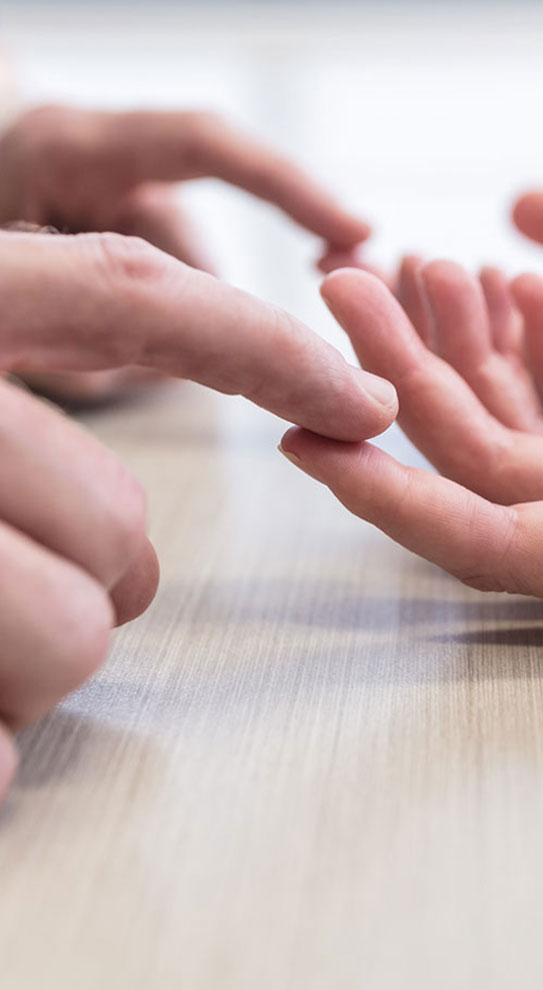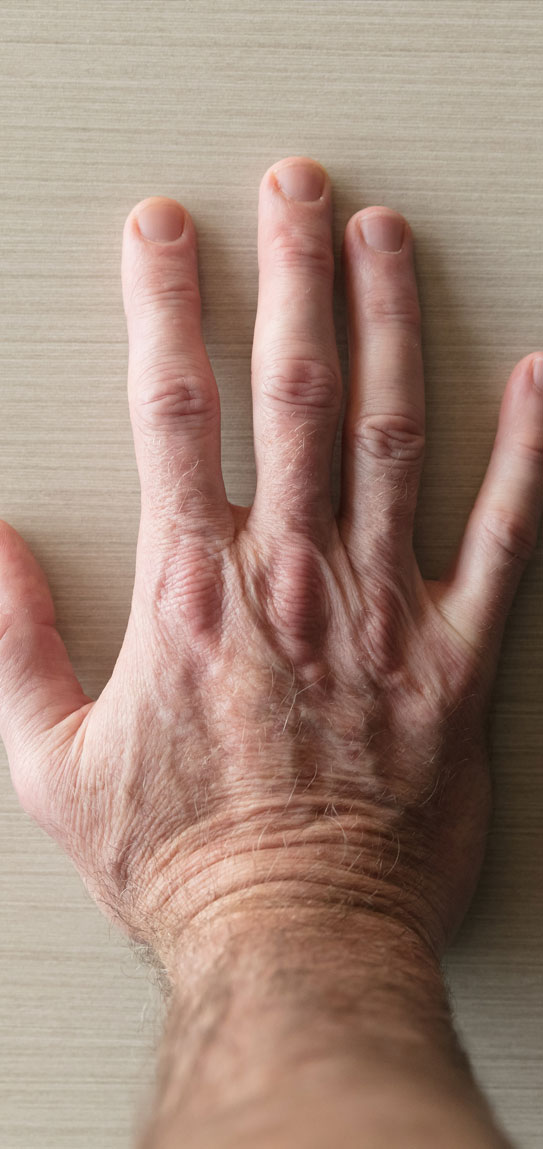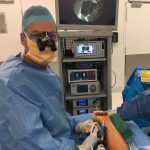Congenital hand differences
Background
“Congenital” means present at birth. Congenital hand problems or “differences” include an enormous variety of conditions, of varying severity.
The hand begins forming at about 7 weeks gestation, often before the mother is aware of the pregnancy. At this stage the embryo is tiny, and obviously, the hand plate is really tiny.
There are three main groups of hand problems present at birth. These are:
- malformation – where the hand does not form properly for some reason, sometimes genetic.
- deformation – where the hand forms normally, but then changes with growth of the embryo or foetus, because of some external influence.
- dysplasia – where the cells are unable to organise themselves into normal “tissues”. “Tissue” is the word doctors use to describe what the organs of our body are made from – such as nerve, bone, skin, cartilage, ligament, muscle, liver, heart etc. These are all tissues.
Arrival of a baby with a difference
A new addition to a family is a very busy and emotional time, under the best of circumstances. The arrival of a baby with a hand problem is sometimes expected, if there is a family history of a similar problem, or the problem has been identified on pre-natal ultrasound. Sometimes it is a surprise, which is often very stressful for the parents.
It is natural for parents to be concerned for the well being of their children, and especially with some of the more severe problems the future might appear a bit bleak. However, the individual who is born with a difference does not know life another way. And they tend to adapt incredibly well. Our patients with very severe differences always amaze us with how they cope and even excel. They may not be able to do everything, but they can do most things, and well.


Role of surgery- the “2/4 rule”
Surgery sometimes has a role for patients with congenital hand differences. The best goal of surgery is to improve function, but sometimes improving cosmesis, or the way it looks, is a worthy goal also.
One excellent rule for the surgeon is “if you can’t make it work better, don’t make it look worse”. Sometimes scars are worthwhile, if the surgery helps the child’s hand function. But the presence of a hand difference should not immediately justify an operation.
One of my mentors in hand surgery, Peter Carter in Dallas, has a memorable rule, the “2/4 rule” which underpins the role of surgery in congenital hand problems. The rule is this, “we should do surgery for patients, not to patients”. That is, at the end of the day, the patient should feel some kind of significant improvement in their life, not just that they’ve been through another medical experience.
Timing of surgery
The timing of surgery will depend on the patient, the condition, the family, the surgeon and the facilities available.
Very rarely, a condition present at birth requires immediate surgical intervention. This would usually be to prevent further damage to the hand or limb.
From an anaesthetic perspective, it is preferable to wait until the baby is 6 months old. After this age, in a children’s hospital, a general anaesthetic is as safe as in an adult.
From a surgical perspective, the bigger the hand the easier the surgery. The first two years of life are associated with a 100% increase in the size of the hand, which does not occur again! Therefore, unless there is a reason otherwise, it is best to wait until the child is about 2 years old.
From the perspective of aftercare, most children become obliging to their parents wishes at around 7 years of age. Obviously this varies to a degree. This is relevant when the surgery carries complicated aftercare requirements, such as if tendon transfers are performed. This type of surgery requires aftercare which requires a willing patient.
Sometimes it is not clear if surgery will benefit the patient functionally, and when this is the case, it is better to wait and watch, and often the answer becomes clearer, or the question goes away.
Aftercare
Often surgery is carried out before school age, when the child is not completely on-board with the aftercare. When this is the case, we must often use an above elbow, closed cast to keep the wound and dressings intact. “Dissolving” or absorbable sutures are used, so that removal is not required, which would be a nightmare in most young children.
An important responsibility for the parents is to keep the cast and dressings dry. This is not an easy assignment. Children seem to always find the dog’s water bowl or toilet with the lid left up. These things need to be thought of and attended to in advance to improve the chances of a dry cast! If the cast gets slightly wet, then a hairdryer on low heat can be used to dry things out. If it gets completely soaked and falls off – well potentially that’s a decent problem, which may even require a trip back to the operating theatre.
An important responsibility for the parents is to keep the cast and dressings dry. This is not an easy assignment. Children seem to always find the dog’s water bowl or toilet with the lid left up. These things need to be thought of and attended to in advance to improve the chances of a dry cast! If the cast gets slightly wet, then a hairdryer on low heat can be used to dry things out. If it gets completely soaked and falls off – well potentially that’s a decent problem, which may even require a trip back to the operating theatre.



